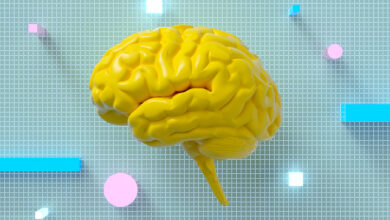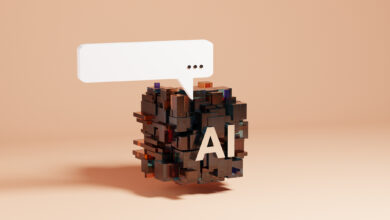How to Treat Generative AI Image Problems

Bonnie Moss, president and founder of Moss Networks navigates through the haze of sensationalism, revealing the true capabilities, implications, and potential pitfalls of Generative AI. From its impact on employment to its role in safeguarding privacy.
Generative AI is one of the more exciting technologies to hit the market in a long time. But at times, it’s also one of the most misunderstood. This is a shame because the confusion and hype surrounding it isn’t doing anyone – providers, users, and potential beneficiaries – any favors.
The sooner we clear things up, the sooner we reap its true benefits.
Generative AI is Not Going to Wipe Out Humanity
I recognize that the Center for AI Safety warned that AI could lead to societal-scale risks, such as pandemics and nuclear war. The Center’s statement made headlines for days. The many voices of reason were lost in those sensational headlines, specifically the numerous experts who rightly countered that generative AI was far from that capability.
The fact is that generative AI needs humans to train it on things humans have created. Take ChatGPT as an example, which essentially predicts what someone might say based on what people have said in the past. Generative AI can’t make the kind of colossal leap required to enslave humanity – a scenario so profoundly unique it would require massive amounts of human-labeled data to execute.
At that point, who is doing the evil deed, the data scientists who curate and label the data or the AI itself? Maybe someday, there will be a technology capable of enslaving humans without our input, but it won’t be AI, given its dependence on humans.
It does seem to me, however, that this warning is an attempt to deflect attention away from the real challenges of AI, namely discrimination and potential violations of privacy – precisely the things the regulators are warning us about.
See More: Can Generative AI Help Stressed-Out IT Professionals?
Generative AI, like All AI, Will Change Work, Not Eliminate Workers
AI has scared the American workforce ever since I can remember. Back in 2016, a survey conducted by KRC Research found that 82% of workers feared that AI was coming for their jobs.
In April 2023, a Goldman Sachs report warned generative AI could eliminate up to 300 million jobs – if it lived up to its touted capabilities. Hollywood writers went on strike partly due to a fear of ChatGPT writing television and movie scripts. After all, entertainment studios did have open job recommendations for generative AI specialists. Those job descriptions described different tasks, such as deploying it to make better content recommendations to end users.
But writers need not fear – at least not yet. Research from Freelancer.com found that AI wasn’t equal to the creativity of humans. Freelancer.com looked at 280,000 jobs posted to its site and found that in the second quarter of 2023, while the writers’ strike began, creative writing jobs were up 58%.
“AI can’t replace creativity yet. While workers and businesses are benefiting from productivity gains offered by generative AI, the data suggests that the technology in its current form isn’t able to replace creative work. We saw a similar trend occur in the first quarter of the year, as creative design jobs were flourishing despite interest for generative AI tripling,” Matt Barrie, Chief Executive at Freelancer.com, says in the report. What’s more, many freelance writers are earning serious money. CNBC found writers on the site who charge a rate of $250 per hour.
But generative AI, like all AI, is changing work for the better by eliminating the drudgery of repetitive tasks and enabling workers to focus on their jobs’ strategic and creative aspects. For instance, OpenWeb’s 2024 Media Trends Report notes that publishers see generative AI as allowing them to reimagine critical roles, such as revenue and ad operations.
The Real Benefits of Generative AI
Hallucinations and inaccuracies aside, generative AI offers tangible benefits, mostly by helping internal experts speed up their work.
Take the healthcare industry as an example. Trenholm Ninestein in Medical Economics writes, “Large language models can help internal data analysts within a hospital find ways to optimize revenue and ensure compliance by asking the model specific questions in natural language about billing codes, insurance regulations, reimbursement guidelines, or any other billing-related queries. The model can help retrieve relevant information and provide insights to support decision-making.”
He continues, “It can also help reduce billing errors by providing real-time suggestions and recommendations to coding staff during the coding process. It can help ensure accurate and compliant coding by offering insights into appropriate codes, modifiers, or documentation requirements based on industry-standard coding guidelines.”
This is the kind of game-changing efficiency that the OpenWeb publishers discussed. By eliminating the grunt work of formatting questions into language computers can understand, practitioners can get to the information they need to glean strategic insights and make decisions faster and more easily. This is a key benefit of generative AI.
Another is the ability of generative AI to solve some of the privacy challenges that consumer data poses. Rather than use consumer data to train critical customer service-oriented models, generative AI can create synthetic data that acts like real-life data but is privacy-compliant. If this seems far out to you, rest assured that companies like Nurdle are doing just that.
If 2023 was the year of generative AI hype and FUD (fear, uncertainty, and doubt), let’s hope that 2024 is a year of realistic awareness of what this incredibly powerful tool can do for workers. While I don’t see it poised to cause massive layoffs or extinctions any time soon, it can make a lot of jobs more efficient and even more satisfying for many people.
Have you involved your team in conversations to debunk myths about GenAI? How could this innovative technology influence the future of your organization? Let us know on Facebook, X, and LinkedIn. We’d love to hear from you!
Image Source: Shutterstock



